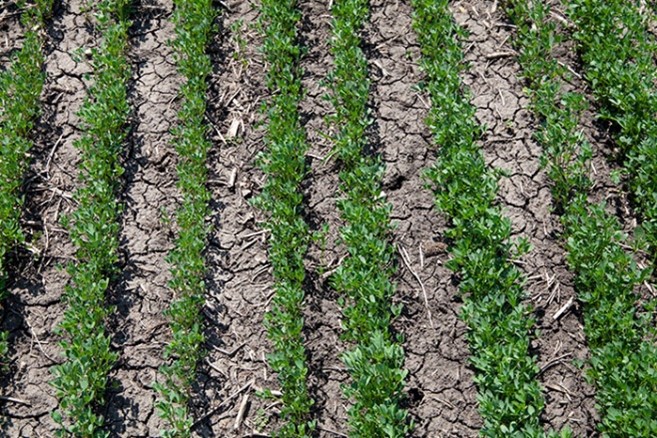
Apr 14, 2022, 8:30 AM
Establishing Alfalfa
Establishing alfalfa is crucial and requires more effort compared to other crops. Since an alfalfa plant will last four years or more, a poor producing stand can be haunting. Stunting and losing plant density during the establishment phase can carry over to subsequent years. However, special care to properly seed alfalfa and starting out with a good stand will pay dividends over the life of the crop.
Steps for a Successful Alfalfa Stand:
- Select a well-drained field for alfalfa (if possible) and soil test the field the year prior to the seeding year. This provides time to apply lime and fertilizer as needed to ensure proper soil pH and fertility.
- There are many ways to plant alfalfa. Key success factors include good seed to soil contact and not placing the seed too deep. Firm the seedbed by rolling before and after seeding. Having a firm seedbed helps with ease of harvesting and is easier on equipment over the life of the stand.
- Alfalfa grows better without competition. Doing anything to reduce or eliminate stress will increase yield and persistence. Stunting from stress or competition will impact current yield and potentially even the yield in the year following the severe stress. Practices that aid in stress mitigation include controlling weeds, eliminating nurse crops if possible, controlling pests like potato leafhopper when present, and reducing disease impact by planting good genetics and treated seed.
Factors to Consider at Planting:
- Select a variety with good disease resistance and winter survival score

- Calibrate the planter to know how much seed is dropping per acre and per square foot
- Firm the seedbed before and after planting by rolling the field. Seed-to-soil contact is critical
- Ensure seed is placed shallow (1/4 to 1/2 inch or less)-if no seed can be found on top of the ground after planting, the alfalfa was likely seeded too deep
- Fifteen emerged seedlings per square foot is minimum for a successful stand (4+ year life)
Seedlings per square foot is better to be higher than lower as alfalfa will naturally thin itself out over the course of the first year if it is planted too heavily. - Direct seeding (no companion or nurse crop) is more likely to produce a successful stand
- If using a nurse crop like oats, seed the oats lightly and harvest early for best success of good establishment
- To avoid autotoxicity, don't plant alfalfa after or into an existing alfalfa field (except for newly seeded fields-less than 1 year)
Summary
Well-managed alfalfa can be very productive and offer high value returns. Getting an alfalfa stand established successfully means having the correct plant density, the right soil fertility, proper conditions at planting, and selecting varieties that have good disease tolerance and winter survival. These factors greatly increase the odds of having a long living, high yielding alfalfa stand.
To check out alfalfa varieties available through Legend Seeds, please visit our alfalfa product page.

